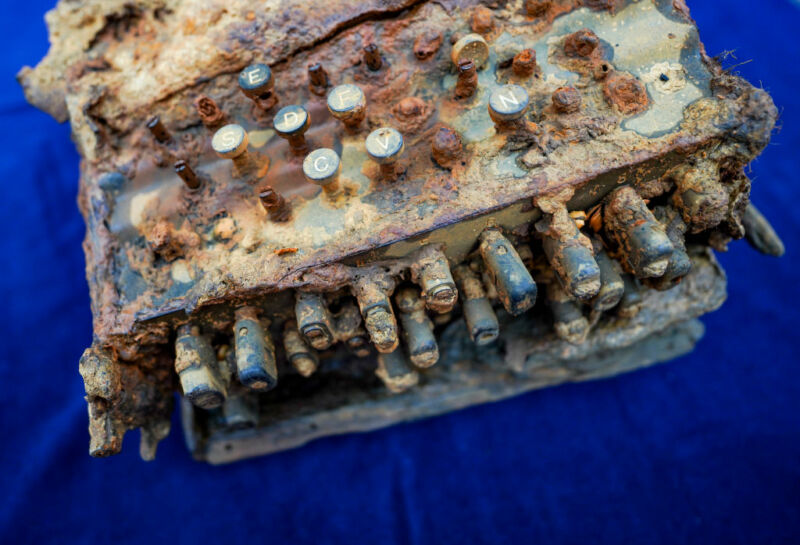Rusty but intact: Nazi Enigma cipher machine found in Baltic Sea
Ars Technica » Scientific Method 2020-12-04

Enlarge / The Enigma cipher machine found in the Baltic Sea is lying on a table in front of the archaeological office of Schleswig-Holstein. After its discovery, the machine was handed over to the office by research diver Huber. Photo: Axel Heimken/dpa (Photo by Axel Heimken/picture alliance via Getty Images) (credit: Getty Images)
Divers scouring the Baltic Sea for discarded fishing nets have stumbled on the rarest of finds: an Enigma encryption machine used by the Nazis to encode secret messages during World War II.
The electromechanical device was used extensively by the Nazi military to encrypt communications, which typically were transmitted by radio in Morse Code. Three or more rotors on the device used a stream cipher to convert each letter of the alphabet to a different letter.
The Enigma had the appearance of a typewriter. An operator would use the keys to type plaintext, and the converted ciphertext would be reflected in 26 lights above the keys—one light for each converted letter. The converted letters would then be transcribed to derive the ciphertext.